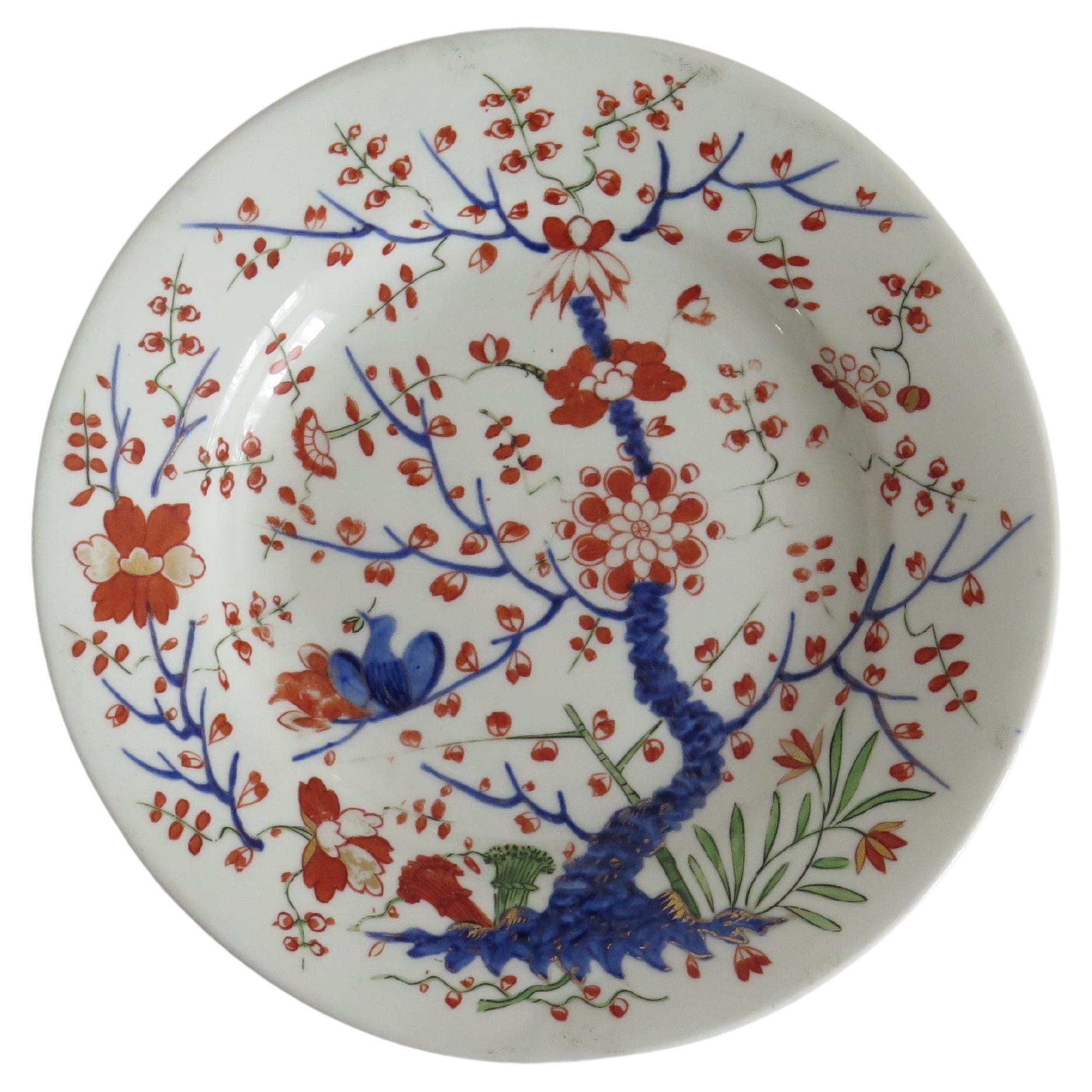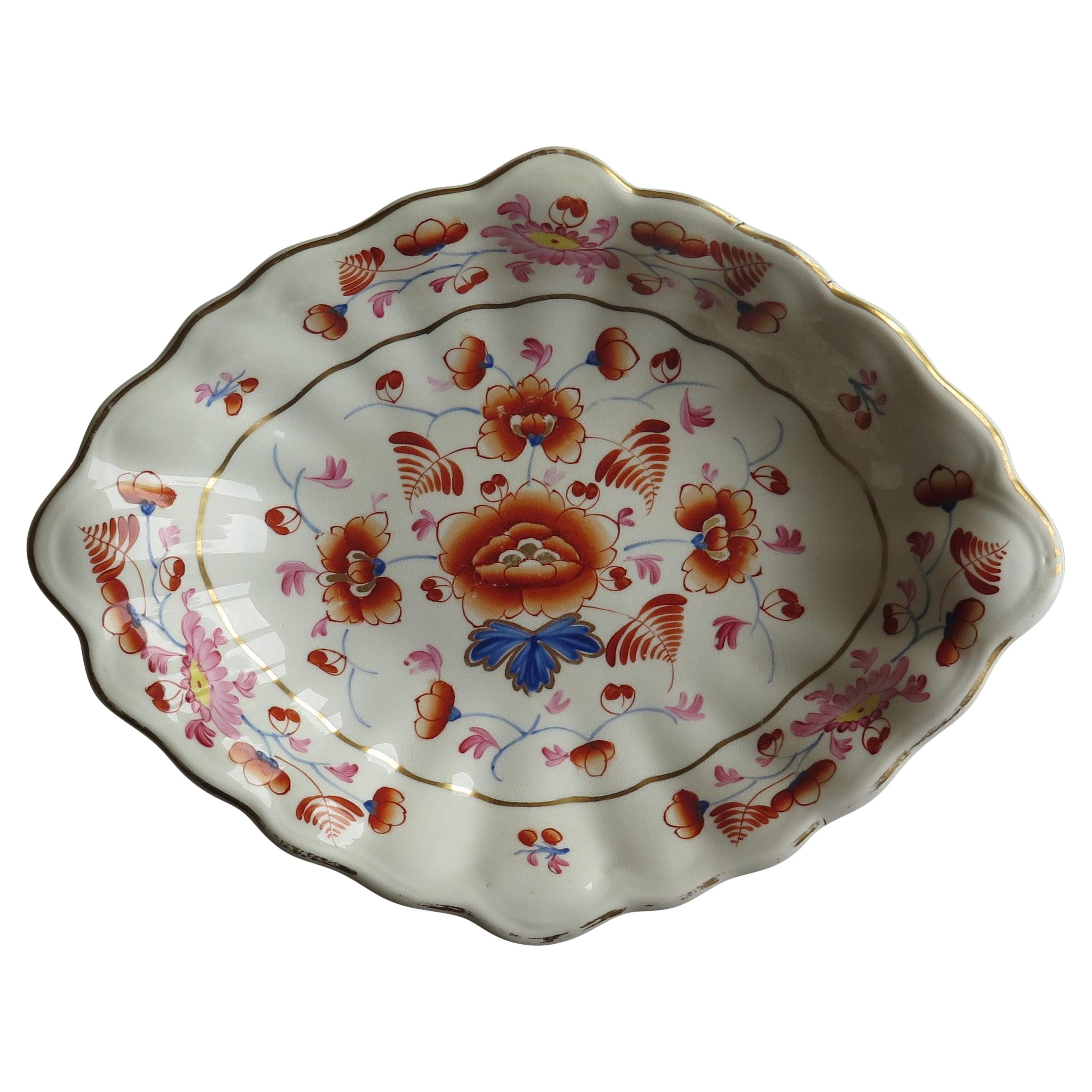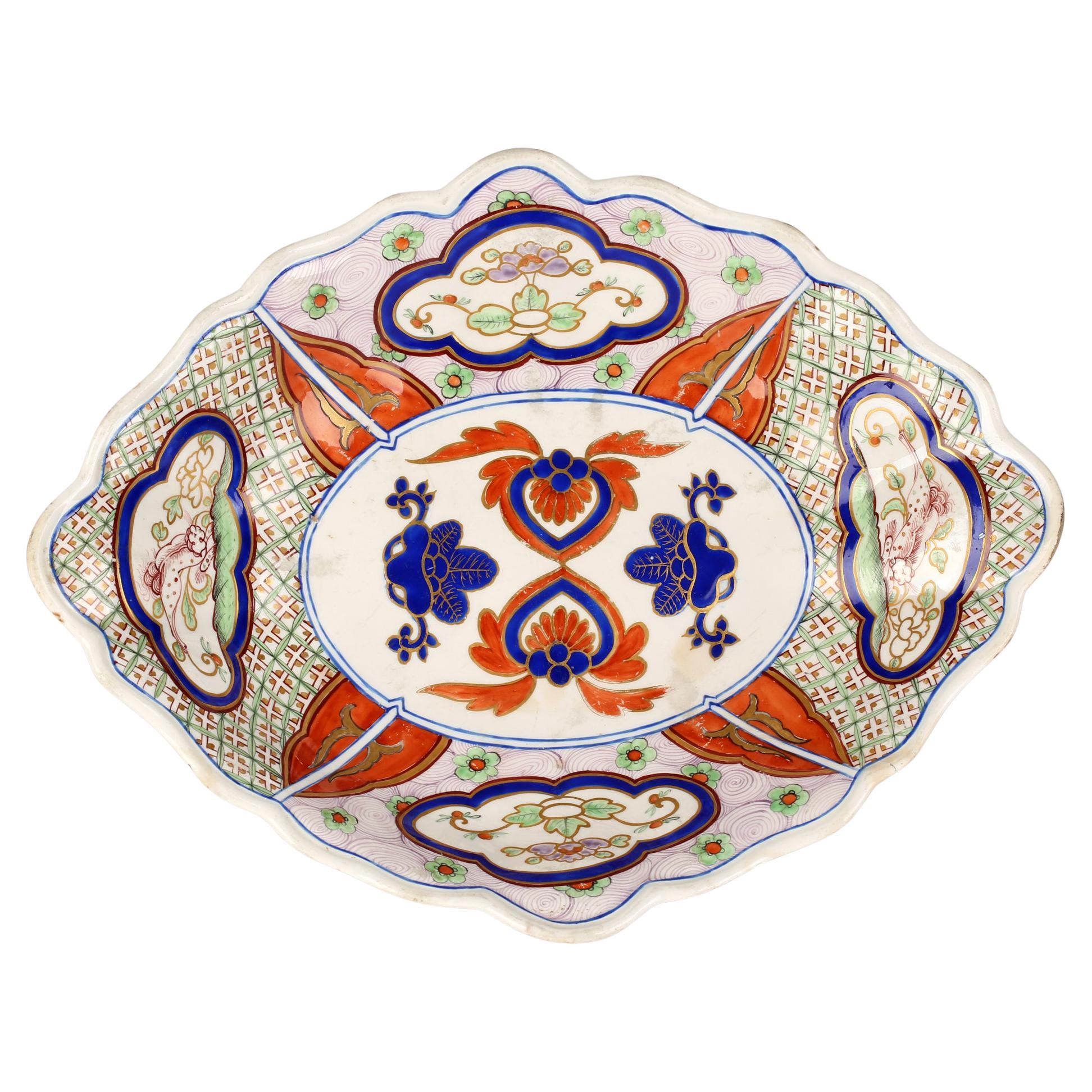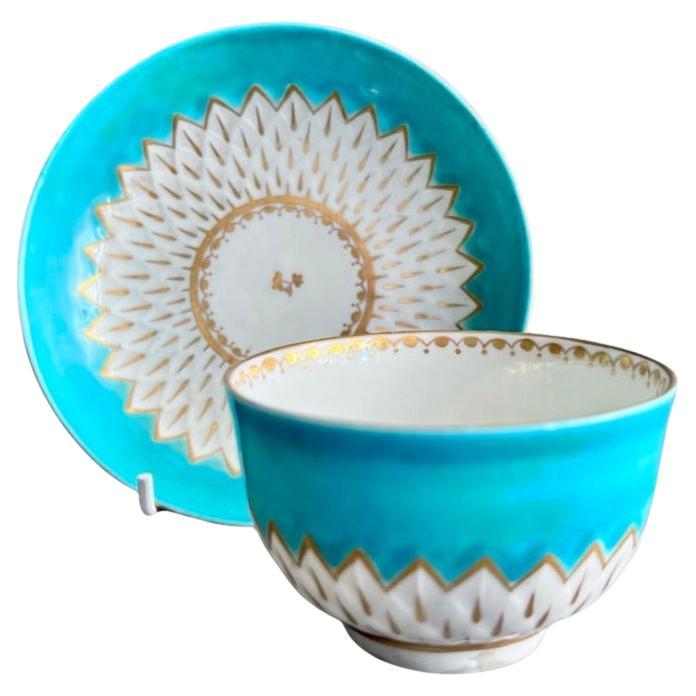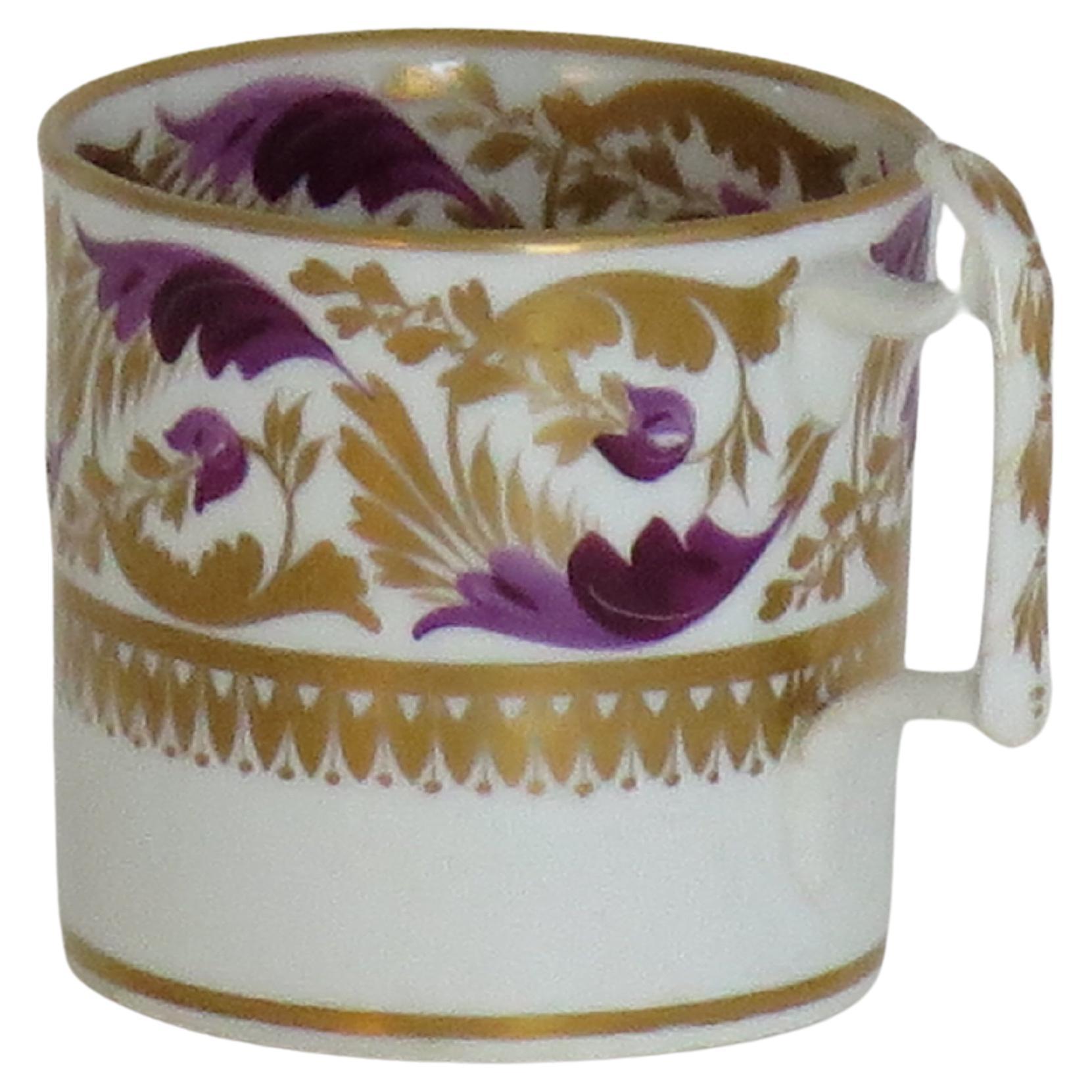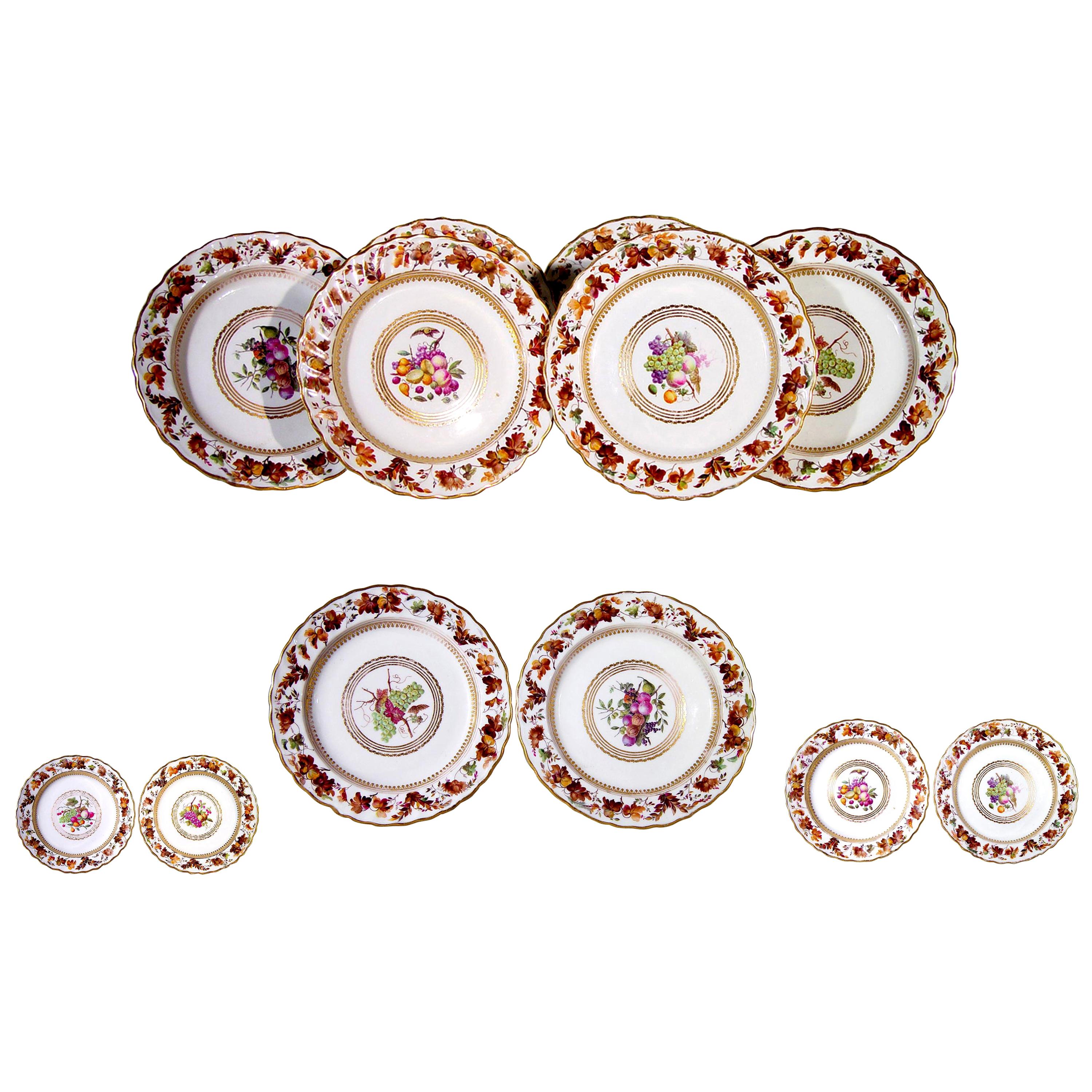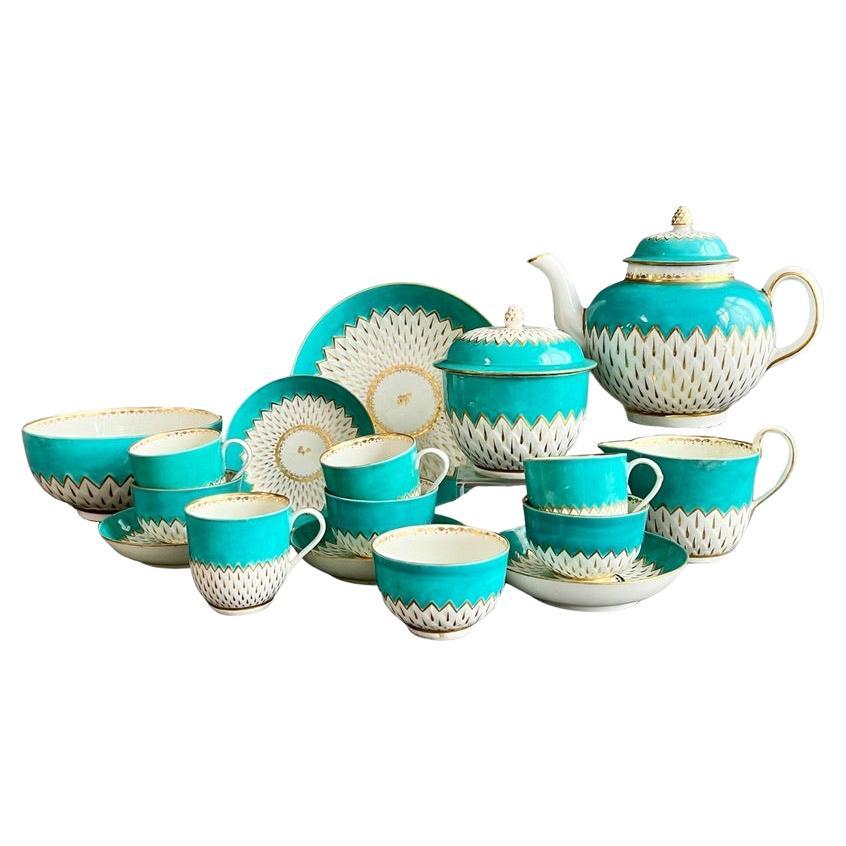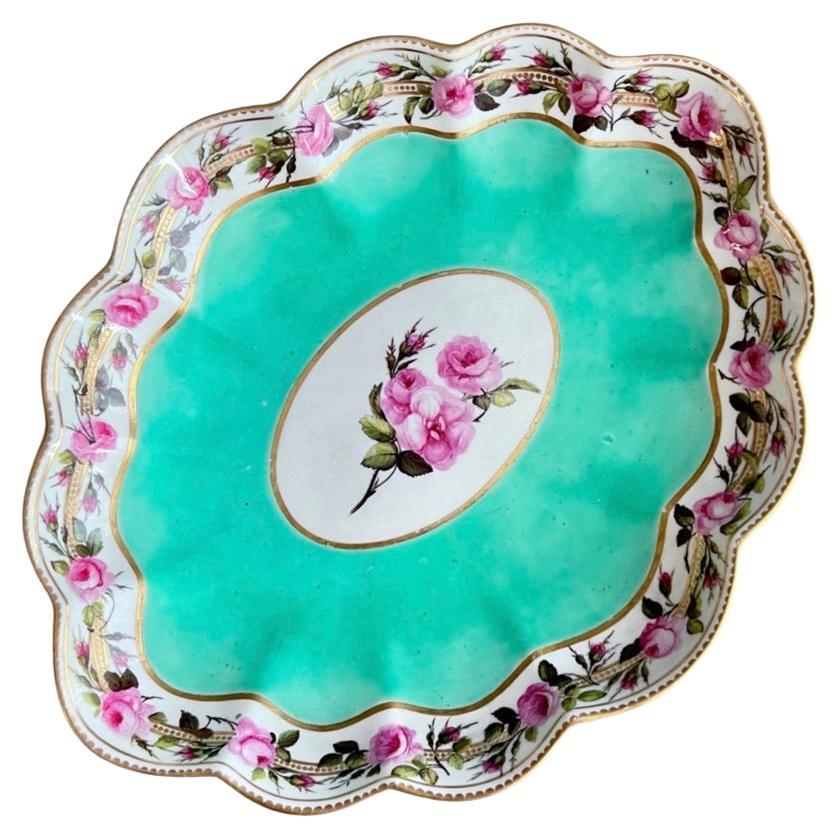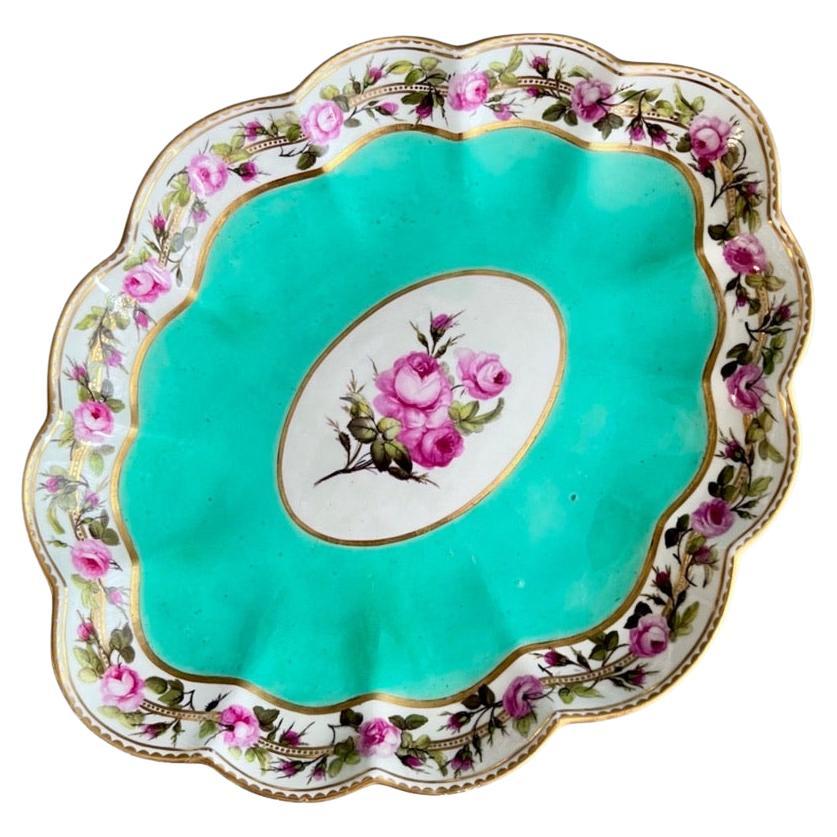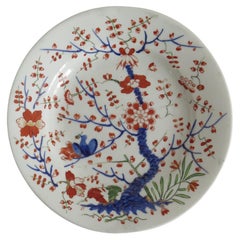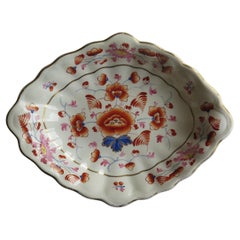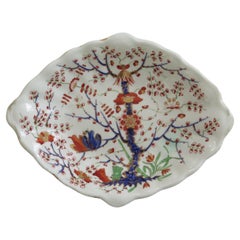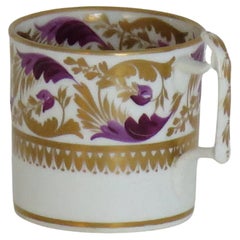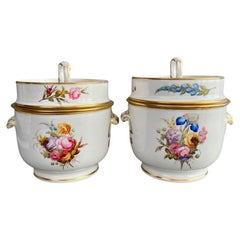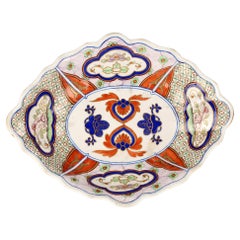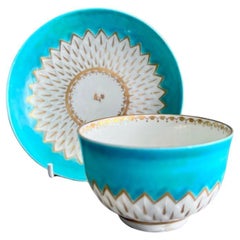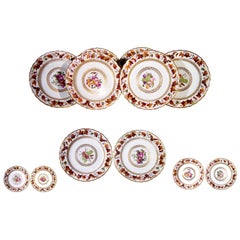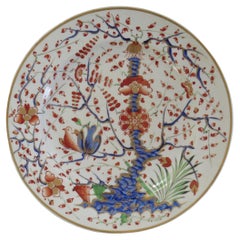
Georgian Derby Porcelain Dinner Plate Partridge Pattern hand painted, Ca 1815
View Similar Items
Video Loading
Want more images or videos?
Request additional images or videos from the seller
1 of 17
Georgian Derby Porcelain Dinner Plate Partridge Pattern hand painted, Ca 1815
About the Item
- Creator:Derby (Manufacturer)
- Dimensions:Height: 1.13 in (2.88 cm)Diameter: 10.1 in (25.66 cm)
- Style:Georgian (Of the Period)
- Materials and Techniques:
- Place of Origin:
- Period:
- Date of Manufacture:circa 1815
- Condition:Wear consistent with age and use. Some kiln grit in the glaze from the time of making. NO Damage, NO Restoration. Enamels bold and bright. Gilding good. - Please see Images.
- Seller Location:Lincoln, GB
- Reference Number:Seller: P 21821stDibs: LU990337463212
About the Seller
5.0
Platinum Seller
Premium sellers with a 4.7+ rating and 24-hour response times
Established in 1993
1stDibs seller since 2013
1,374 sales on 1stDibs
Associations
LAPADA - The Association of Arts & Antiques Dealers
Authenticity Guarantee
In the unlikely event there’s an issue with an item’s authenticity, contact us within 1 year for a full refund. DetailsMoney-Back Guarantee
If your item is not as described, is damaged in transit, or does not arrive, contact us within 7 days for a full refund. Details24-Hour Cancellation
You have a 24-hour grace period in which to reconsider your purchase, with no questions asked.Vetted Professional Sellers
Our world-class sellers must adhere to strict standards for service and quality, maintaining the integrity of our listings.Price-Match Guarantee
If you find that a seller listed the same item for a lower price elsewhere, we’ll match it.Trusted Global Delivery
Our best-in-class carrier network provides specialized shipping options worldwide, including custom delivery.More From This Seller
View AllGeorgian Derby Porcelain Plate or Dish Partridge Pattern hand painted, Ca 1815
By Derby
Located in Lincoln, Lincolnshire
This is a very good antique Side / Desert Plate or Dish, made by the Derby factory, hand painted and gilded in the beautiful Partridge Pattern, during the reign of George 111 in the ...
Category
Antique Early 19th Century English Georgian Porcelain
Materials
Porcelain
Georgian Derby Porcelain Serving Dish or Bowl Hand-Painted, Fully Marked Ca 1815
By Derby
Located in Lincoln, Lincolnshire
This is a good oval shaped serving dish or bowl, made by the Derby factory, hand painted and gilded in a free flowing floral pattern, during the reign of George 111 in the early 19th century, circa 1815.
This is a well potted oval shaped dish or bowl with a vertically fluted and moulded side edge and rim, sitting on a low foot.
The piece is beautifully hand decorated in a free flowing manner, in one of Derby's Imari style floral Patterns, with enamels of cobalt blue, burnt orange, pink and yellow, all in varying shades. It has then been hand gilded, with gold detail to some of the flowers, blue leaf, the inner border and the outer rim.
The dish has the early Derby...
Category
Antique Early 19th Century English Georgian Serving Bowls
Materials
Porcelain
Georgian Derby Porcelain Platter or Dish Partridge Pattern hand painted, Ca 1815
By Derby
Located in Lincoln, Lincolnshire
This is a very good antique porcelain platter or dish, made by the Derby factory, hand painted and gilded in the beautiful Partridge Pattern,...
Category
Antique Early 19th Century English Georgian Platters and Serveware
Materials
Porcelain
Georgian Derby Coffee Can in hand painted pattern 165, circa 1815
By Royal Crown Derby Porcelain
Located in Lincoln, Lincolnshire
This is an exquisite Porcelain Coffee can made by the Derby factory, in the reign of George 111 in the early 19th Century, circa 1815
.
Straight sided coffee cans were only made for ...
Category
Antique 19th Century British George III Ceramics
Materials
Porcelain
Georgian Derby Shell Dish or Plate Hand Painted & Gilded Pattern 129, Ca 1810
By Royal Crown Derby Porcelain
Located in Lincoln, Lincolnshire
This is a beautiful porcelain shell dish or plate hand painted and gilded in pattern 129, made by the Derby factory, in the reign of George 111 in the early 19th century, circa 1810.
Shell dishes, named as such for taking the shape of a shell were used in Dessert services.
This dish has been exquisitely hand decorated in a French influenced "Chantilly" pattern ( No. 129) consisting of scattered sprigs of cornflowers in pink, blue and green with gilt leaves and with further rich hand gilding around the rim and handle section.
The dish has the early Derby...
Category
Antique Early 19th Century English George III Decorative Dishes and Vide...
Materials
Porcelain
Georgian John Ridgway PAIR Porcelain Plates Hand Painted Pattern 1054, Ca 1825
By Ridgway Porcelain
Located in Lincoln, Lincolnshire
This is a beautiful pair of very decorative, Porcelain hand painted Desert Plates by John Ridgway, of Shelton, Hanley, Staffordshire Potteries, England, dating to the George 1Vth / W...
Category
Antique Early 19th Century English Regency Ceramics
Materials
Porcelain
You May Also Like
Derby Pair of Porcelain Ice Pails, Fine Flowers by William Billingsley, ca 1790
By Derby, William Billingsly
Located in London, GB
This is a pair of spectacular porcelain ice pails made by the Derby Porcelain Company in about 1790 and decorated with pattern 80, which consists of very fine flowers by the famous p...
Category
Antique 1790s English George III Porcelain
Materials
Porcelain
$5,500 / set
Free Shipping
Derby Porcelain Georgian Rare Hand Painted Dish
By Derby
Located in Bishop's Stortford, Hertfordshire
A rare and unusual Georgian Derby Porcelain dish finely hand painted colored enamels dating from around 1790. The oval shaped dish has a raised scalloped rim and is hand painted with...
Category
Antique 1790s English George III Porcelain
Materials
Porcelain
Derby Porcelain Tea Bowl, Artichoke Pattern in Turquoise, Georgian ca 1785
By Derby
Located in London, GB
This is a beautiful tea bowl and saucer made by Derby in about 1785. The set has the distinctive "artichoke" moulding and a bright turquoise ground with the white artichoke surface ...
Category
Antique 1780s English George III Tea Sets
Materials
Porcelain
Derby Porcelain Plates, Pattern 126, Painted by William Longden, Set of Six
By Derby
Located in Downingtown, PA
The beautiful and stylish Derby porcelain set of six plates are painted by William Longden with fruit within a heart-shaped gilt border. The fruit depicted include grapes, plums, str...
Category
Antique 1790s English Georgian Dinner Plates
Materials
Porcelain
Derby Porcelain Tea Service, Artichoke Pattern in Turquoise, ca 1785
By Derby
Located in London, GB
This is a beautiful and extremely rare tea service made by Derby in about 1785. The set has the distinctive "artichoke" moulding and a bright turquoise ground with the white artichok...
Category
Antique 1780s English George III Tea Sets
Materials
Porcelain
Derby Lobed Dish, Camden Service, William Billingsley Roses on Green, 1795 (1)
By Derby
Located in London, GB
This is a very rare oval lobed dish from the famous "Earl of Camden" service made by the Derby Porcelain Company in 1795. The service was painted with typical English roses by William Billingsley, one of Britain's most famous painters, and responsible for exactly this type of rose painting on British porcelain.
There are more items available in this pattern, see separate listings. To keep these items together we'd be happy to offer a discount on multiple purchases - please ask!
The Derby Porcelain Company, later called Royal Crown Derby, is currently the oldest British porcelain factory still in production. The Derby pottery was one of the most prominent potteries right from the start of English porcelain production in the mid 1700s to today, and the factory went through many iterations. In the 1820s, it was called "Bloor Derby" as it came under the ownership of Robert Bloor; this factory later closed but its legacy was continued under the ownership of a group of employees, and later this was merged into a new factory called Royal Crown Derby, which is still in operation today and still carries forward some of the oldest patterns that have made it famous over the centuries.
William Billingsley was a brilliant but notoriously difficult man who left behind a trail of debts, broken hearts and mystery - but he was also one of the most important people in the history British porcelain. Billingsley revolutionised the way British decorators painted flowers; he added a freedom and artistry that now singles out British flower painting, and he created a new technique for painting roses, which you can see in this design. Billingsley worked at Derby, Worcester and Mansfield. He also set up his own potteries in Pinxton and Nantgarw and created some of the best porcelain ever made, but racking up great debts, before running off in the dead of night and ending his days at Coalport painting flowers.
Items painted by William Billingsley are rare and very much in demand - together with Thomas Baxter's work they are probably among the most desired pieces of British porcelain.
The Earl of Camden service was a huge service ordered by Lady Camden in 1795. It had to be produced under great, and unrealistic, time pressure and was notoriously late, much to Lady Camden's chagrin. She wanted the service to be produced by only the best artisans and therefore William Billingsley was tasked with painting all items - but it is thought that when it was clear the deadline was impossible to make, he enlisted the help of John Brewer for some of the last items, such as the ice pails. This plate shows the typical "Billingsley" roses: a beautiful naturally flowing garland of English roses interspersed with buds, trailing around a crisp gilt ribbon. The way the roses link into each other, the way each individual one is completely different, the light effects achieved by rubbing out some of the pink paint, and the very fine buds and foliage all point to these being from Billingsley's hand.
This dish came together with a plate that bears labels that point to a rich provenance: the Doris Wheatley Collection, the Daniel Collection, Derek Gardner...
Category
Antique 1790s English George III Serving Bowls
Materials
Porcelain
Recently Viewed
View AllMore Ways To Browse
Bone China Charger
Bongo Bar Cabinet
Bongo Cabinet
Bookcase Twin Headboard
Bookends Bronce
Bookends Toucans
Bookshelf Speakers
Boots Pure Drug Company
Bordalo Cabbage Bowl
Borge Mogensen Library Table
Boro Japanese Patchwork
Borsani T96
Botanical Creamware
Bow Porcelain Tankard
Bradburn Home
Brahma Four Faces
Brandt Bamboo
Bras Bed
